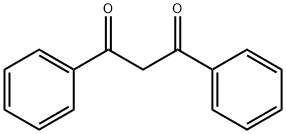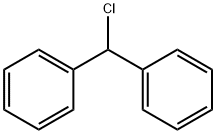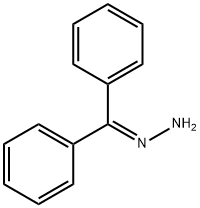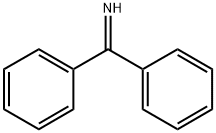A3217512
Dibenzoylmethane , ≥98.0%(GC) , 120-46-7
Synonym(s):
1,3-Diphenyl-1,3-propanedione;Dibenzoylmethane
CAS NO.:120-46-7
Empirical Formula: C15H12O2
Molecular Weight: 224.25
MDL number: MFCD00003085
EINECS: 204-398-9
| Pack Size | Price | Stock | Quantity |
| 25G | RMB50.40 | In Stock |
|
| 100G | RMB89.60 | In Stock |
|
| 500G | RMB229.60 | In Stock |
|
| 2.5kg | RMB935.20 | In Stock |
|
| others | Enquire |
Update time: 2022-07-08
PRODUCT Properties
| Melting point: | 77-79 °C(lit.) |
| Boiling point: | 219-221 °C18 mm Hg(lit.) |
| Density | 0.800 g/cm3 |
| vapor pressure | 0.01Pa at 20℃ |
| refractive index | 1.6600 (estimate) |
| Flash point: | 219-221°C/18mm |
| storage temp. | Store below +30°C. |
| solubility | Chloroform (Slightly), Methanol (Slightly, Sonicated) |
| pka | 8.95±0.10(Predicted) |
| form | Crystals |
| color | Light yellow to yellow |
| Water Solubility | It is Soluble in ether, chloroform, and aqueous sodium hydroxide. Insoluble in water. |
| Merck | 14,3009 |
| BRN | 514910 |
| Stability: | Stable. Incompatible with strong oxidizing agents. |
| InChIKey | NZZIMKJIVMHWJC-UHFFFAOYSA-N |
| LogP | 4.59 at 25℃ |
| CAS DataBase Reference | 120-46-7(CAS DataBase Reference) |
| NIST Chemistry Reference | 1,3-Propanedione, 1,3-diphenyl-(120-46-7) |
| EPA Substance Registry System | 1,3-Propanedione, 1,3-diphenyl- (120-46-7) |
Description and Uses
Dibenzoylmethane is a new kind of PVC heat stabilizer, it has better transparency, nontoxic and odorless. In case of combined use with Calcium/Zinc, Barium/Zin and other heat stabilizer, it can greatly improve the initial color, transparency, long term stability of PVC, and also can improve the precipitation and “zinc burning” problem during the process. It has very good synergy with zinc soaps, and can protect the PVC color. This material can absorb UV at 290nm, which has the effect as light stabilizer and act as long term stabilizer for PVC products.
Safety
| Symbol(GHS) |  GHS07 |
| Signal word | Warning |
| Hazard statements | H315-H319-H335 |
| Precautionary statements | P261-P271-P280 |
| Hazard Codes | Xi |
| Risk Statements | 36/37/38 |
| Safety Statements | 22-24/25 |
| WGK Germany | 3 |
| RTECS | TZ1930000 |
| Hazard Note | Irritant |
| TSCA | Yes |
| HS Code | 29143900 |
| Toxicity | rat,LD,oral,> 500mg/kg (500mg/kg),National Academy of Sciences, National Research Council, Chemical-Biological Coordination Center, Review. Vol. 5, Pg. 28, 1953. |






